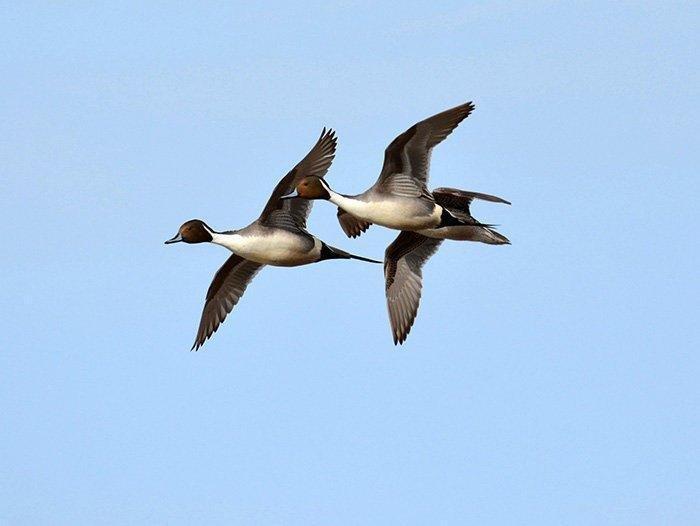DWR Press Release
Lots of reasons to hunt ducks and geese in Utah
It’s hot outside, but a chance to scan through Utah’s latest waterfowl guidebook is a sure sign fall can’t be too far away. You can get the free 2018–2019 Utah Waterfowl Guidebook at wildlife.utah.gov/guidebooks.
Blair Stringham says Utah’s waterfowl management areas will open to scouting two days before youth waterfowl hunts start in September. “The hunt is coming up quick,” he says, “but there’s still plenty of time to prepare. If you’ve been thinking about getting into duck or goose hunting, I’d encourage you to give it a try this fall.”
In addition to serving as the migratory game bird coordinator for the Division of Wildlife Resources, Stringham is an avid waterfowl hunter. He says a variety of things put him in the marsh each fall. He also talks about the items you’ll need to get started.
Reason 1 – Plenty of days to hunt
The general waterfowl hunt is long. It starts Oct. 6 in the Northern Zone and Oct. 13 in the Southern Zone. It doesn’t end until January. The light goose hunting season is even longer. It runs until March 10.
Reason 2 – Lots of chances to shoot
Ducks are the most plentiful game species in Utah. Between 3 million to 5 million ducks will migrate through Utah this fall. Because ducks are plentiful and easy to see, you’ll likely get more shots than you will while hunting other types of birds.
Reason 3 – Plenty of places to hunt
Waterfowl management areas are found in various places across Utah. The hotspot is the eastern shore of Great Salt Lake, where six WMAs and the federal Bear River Migratory Bird Refuge provide public hunters with more than 130,000 acres to hunt.
Reason 4 – Watching geese and a variety of ducks
Watching ducks and geese in flight is entertaining, even if the birds are too far away to shoot. And few states offer the variety of ducks Utah does. Everything from mallards and pintails to canvasbacks and redheads migrate through Utah in good numbers.
Reason 5 – Gorgeous sunrises and sunsets
Some of the best waterfowl hunting happens early in the morning and late in the afternoon. In the fall, sunrises and sunsets are often spectacular, especially when viewed from the stillness of a marsh while birds wing overhead.
What you need to get started
You don’t need a lot of gear to give duck and goose hunting a try. Most of the state’s WMAs have dikes you can walk. The dikes will give you access to the marsh and the birds. Stringham says you’ll need the following gear. He also encourages you to consult the following information sources:
Item 1 – Clothes, and boots to keep you warm and dry
Some of the best waterfowl hunting happens during stormy weather. Make sure you wear clothes that will keep you warm and dry. And wear hip boots or chest waders too.
Item 2 – A way to retrieve your birds
Make sure you can retrieve the birds you take. A good pair of chest waders will allow you to reach most of the birds you down. However, some hunters bring a small fishing pole. If a duck falls in water that’s too deep to wade, they’ll use the fishing pole — with a multi-hook lure attached to the end — to cast out and retrieve their birds.
Item 3 – Maps
Hunting a WMA can be confusing if you’ve never been there before. Before you visit a WMA, visit https://bit.ly/2nhx8VU. Once you arrive at the webpage, scroll down to the ‘Waterfowl hunting maps’ section. There, you’ll find maps for each WMA in Utah.
Item 4 – Duck identification information
You can learn how to identify ducks by visiting wildlife.utah.gov/guidebooks and scrolling to pages 37–49 in the 2018–2019 Utah Waterfowl Guidebook. There, you’ll find illustrations and information about the various ducks found in Utah.
More information
If you’d like to learn more about hunting ducks and geese in Utah, subscribe to the DWR’s free waterfowl updates. You can subscribe at wildlife.utah.gov/about-us/subscribe-to-updates.html. The updates will arrive in your email inbox.
If you have questions about hunting waterfowl in Utah, call the nearest Division of Wildlife Resources office or the DWR’s Salt Lake City office at 801-538-4700.


